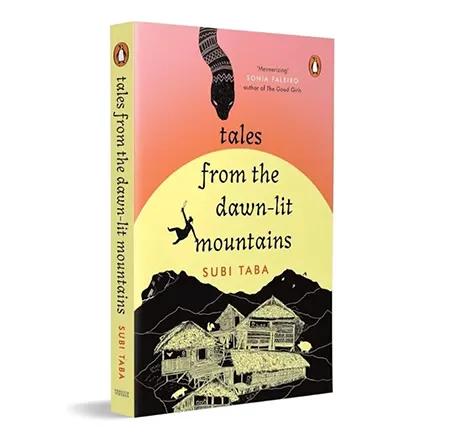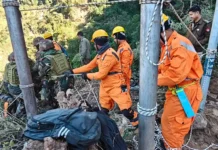TribalBookworms
[ Dr Bompi Riba ]
What qualifies literature as an indigenous literature? Is it the place from where it has originated? Should we call the place ‘home’, which is basically a term that most of us take for granted until it is lost to us, or should we simply refer to literature that dwells on relationships, whether it is with the land, the language, the community, the self, the ancestors, the descendants, the other-than human entities, our histories, our futures or the ideologies that shape us? The way stories are narrated matters because they can either contribute towards erasing or strengthening the existence of a person or his community. The expressions matter because they either suppress or recognise the varied voices. As an indigenous writer articulating the lived experiences of her people with imaginative possibilities, in tales from the dawn-lit mountains, Subi Taba contributes towards the presence of indigenous beings in the literary map of a multicultural country like ours. However, the title of this collection of short-stories being in the lowercase letters cannot go unnoticed. The uppercase ‘T’ in place of a lowercase ‘t’ in the word ‘tales’ would have made a more distinct political stance. It would have countered the implication of the idea of the stories having humble origin because of being born out of a place that is considered to haven one or limited agencies. These stories are rich with imageries and so are they culturally and spiritually too. Therefore, the choice of the lowercasing of the letter ‘t’ in the title of the collection comes across as a deliberate act on the part of the publishers or the author to make a statement about the stories as representative of voices emerging from the periphery.
Subi Taba has managed to give a credible account of how the land affects the lives of the indigenous communities of Arunachal Pradesh, more specifically, the Nyishi tribe of the Tani group. Whether it is a simple act or even a mundane speech, she has tacitly amplified the tribal worldview by grounding her stories in the model of oral tradition. The first story of the collection, ‘A Night with the Tiger’, took me back to my childhood memory of my father’s narration of Kachi Yomcha, a Galo priest, who had supernatural power and could turn himself into a tiger. Subi’s story traces the consequence of the taboo of killing a tiger, which is considered a sacred and spiritual animal by the Nyishis, mainly because of their belief that tigers and humans are brothers. Stories like that of Kachi or the anonymous narrator of the abovementioned short-story are not unbelievable to the people of the region but in no case do they certify them as primitive-superstitious beings. While there are government-initiated campaigns such as ‘Project Tiger’ that focuses on protecting tigers from illegal poaching and trading, the indigenous belief of the tribals serves the same purpose by forbidding men to kill tigers for sport or for any lucrative purposes.
Our literatures do not always need written scripts to narrate our story. They can be done by a lot of culturally significant items as found in this collection of short-stories, such as the hornbill-beak headgear or the bamboo woven rucksack in ‘A Night with the Tiger’, the tattoo on the chest of Patei Lowang in ‘Macabre Memories of a Headhunter’, the large black rock in ‘The Lost Village’, priest Fema’s ancestral ornament or the tassang in ‘Curse of the High Priest’, or the lappa (a wooden log used for imprisoning the foot of a person in captive) in ‘Plant, Pig and Woman’. These items may not fit in fundamentally with the Eurocentric literary criticism but they serve as texts to communicate ideas and stories pertaining to the cultural and social practices of the community concerned. They affirm how the collective memory passed down through generations is a reminder of our greatness as a self-sufficient community, unlike the representation of us being morally, intellectually and materially deficient in popular narratives, as in the case of ‘The Cobra Man’, which is based on a real incident that took place in Pachin Colony, Naharlagun. This incident, which was the highlight of many mainstream media reports, is actually a clear case of how real life is ludicrously funnier and stranger than fiction. While Subi’s nuanced understanding of the human nature is demonstrated through the skilful portrayal of the incident by maturely handling the character of the seemingly simple villagers, the mainstream media’s interest in the incident reveals their callous attitude and a subtle yet implied dichotomy of superior/inferior and civilised/savage.
For a tribal community, the geography of a place is integral to asserting their identity, memory and cultural continuity. For this the hills, the mountains, the rivers, the jungles, the herbs, the trees, the rocks, etc., become etched with meaning.Theybecome repository of the community’s oral traditions which embody the legacies of their ancestors. To illustrate, one can refer to the story of PateiLowangof “Macabre Memories of a Headhunter”, which is basically a recollection of the incident that made him a headhunter. Hebegins his narrative with a reference to a ‘hollock grove’ beneath his unnamed village. This was a site of collective trauma and resistance where fearless warriors fought to protect the dignity of their people. Thedescription of the landscapes and the imageries that the author usesfor construing them while narrating the incidents in the storyreveal the profound relationship that the indigenous community has with their land.This story is violent, and yet I chooseto call it a finestory in the context of its narrative because embedded in it are the truths of the indigenous presence in the past, the present and the future. However, I must say that the ending of the story felt hurried. The same can be said about “The Last Donyi-Polo Priest”, which humanely presents the inner conflicts of the priest, Tagingbo. But as a reader, I felt unsatiated by the presentation of the priest’s character. Just as his persona was opening up layer by layer, with glimpses into his past that provided a sense of complexity and intrigue—the narrative drew to a close. This abrupt ending curtailed the opportunity to fully explore and engage with his transformation, leaving his character arc feeling incomplete.
I particularly liked the narrative style employed by the author in the story ‘Plant, Pig and Woman’. Structurally, it is the dream of a nettle plant which encompasses the entire story. This dreamscape unfolds like an indigenous oral narrative where there are no fixed boundaries between the real and the mythical, the human and the non-human, and the present and the past.
The fact that the nettle’s dream is used as the central voice in the narrative is in itself an indication towards the tradition of storytelling where non-human entities have voices and are agents for preserving and passing on memory. It is also to be noted that the structure of the story is circular because it begins and ends with the slaughtering of the pig, the meat of which was to be given as a bride price. This circular structure metaphorically represents the cycle of violence associated with the patriarchal society. By embedding the story within a dream, the author draws from the worldview of her people, according to which dreams can be prophetic and can also be a medium for spiritual insight.
The last story in the collection, ‘A Man from China’, is a heart-wrenching tragedy of a man who suffers loss, heartbreak, pain and captivity. This story evokes the concept of home in the context of geopolitical displacement. The main protagonist, Tade Ishneya, who originally belonged to Taksing village in Subansiri frontiers, accidentally crosses over to the Tibetan plateau where he took up carpentry as his vocation. He fell in love with a Tibetan girl with whom he had a daughter and to commemorate her birth, he even planted a peach tree. This act of planting symbolically represents his sense of settled-ness, which in turn implies the sense of him finally growing his roots in that place. But due to his lack of residency proof, he was arrested and remained behind the bars for twenty long years. After escaping from the prison, when he found that his family had moved on without him, he felt doubly displaced. This sense of displacement could not be substituted even after returning to his original home, Arunachal Pradesh. He remained constantly in exile emotionally. And his memory of the home that he had created in Nyingchi became his last refuge while his sense of displacement continued to suspend his identity in the liminal zone between the nations, the families, the past and the present.
Broadly speaking, ‘literature’ in its expansive form is pluralistic in nature and it represents both the powerful and the powerless. We often think that it is always about culture but it is also about cultural capital that is directly connected with power-relations. And if we look at the term ‘indigenous literature’, it comprises two distinct powerful words which are supposedly contradicting each other. While ‘indigenous’ conveys literature that is primarily oral in nature, ‘literature’ on the other hand is understood to be mainly available in written form. Therefore, the term ‘indigenous literature’ comes across as an absurd oxymoron and together they serve as a complimentary insight to the way we perceive our indigenous identity, belongingness and relationships. Likewise, when it comes to reading, it is an isolated experience and is opposed to the experience of listening to stories that are shared orally. The latter is basically characterized by a collective experience, which is primarily accentuated by its performative nature. You may feel that the act of reading has limitations because it becomes inconducive for the writer to respond to the reaction of the readers immediately. But I must say that Subi Taba has successfully rendered her stories authentically in its cultural context like any original storyteller. These stories portray the past and the contemporary experiences of the indigenous community. They deal with complex relationships, be it with the land or the people. They tell us about our ‘selves’ and connect us with others beyond our community and our world. Overall, for me, tales from the dawn-lit mountains was an interesting reading of fascinating and yet relatable stories of our people. [Dr Bompi Riba is Assistant Professor, English Department, RGU. She is a member of the APLS and Din Din Club]


